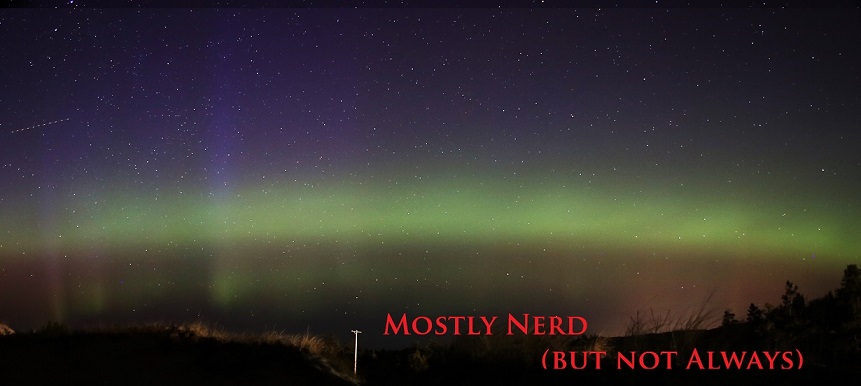Just after 9:30 last night, as I was settling in to watch Monday Night Football, I decided to check spaceweather.com to see if the predicted aurora had developed. Indeed it had. Although the website was listing a Kp value of 4.66, the Auroral Oval Diagram displayed in the left-hand column showed yellow and red in addition to the normal green indicating stronger activity was at hand.
I took the camera rig out on the deck and fired a few shots capturing the elusive lights but they faded within minutes.
After waiting in vain a few minutes for a rebound in intensity, I went inside to download and process the images. By the time I finished editing the photos the lights once again returned. I'm obligated by contract to get the classic shot of the lights reflected off of Lake Michigan
But as midnight approached a wispy cloud-like structure developed at the western horizon and eventually spanned nearly 180 degrees to the eastern horizon.
Thirty second exposure with the camera revealed the cloud's colors of red, pink and purple. It looked similar to auroral pillars but they usually stand vertical in the north. Instead this was a Strong Thermal Emission Velocity Enhancement or STEVE. The STEVE phenomenon has just been identified and studied in the past decade.
The Northern Lights are the result of molecules in the upper atmosphere that pick up energy from charged solar particles, putting them in an energized unstable state. Analogous to fluorescent lighting they give off light to return to the stable neutral state. STEVE's light is analogous to incandescent lights, as it is caused by the heating of upper atmosphere molecules by speeding solar particles. The heat of these molecules can reach an astounding 5000F.
 |
 |
| My house at the intersection of STEVE and the Milky Way |




